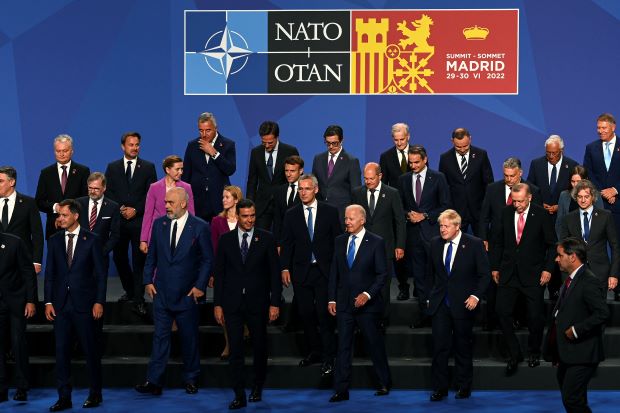More muscular NATO emerges, even as Russia holds upper hand in Ukraine
By Steven Erlanger, Michael D. Shear and Shashank Bengali
MADRID — Demonstrating a renewed determination to stand up to Russia’s invasion of Ukraine, NATO on Wednesday (29) outlined a muscular new strategic vision that positions Moscow as the alliance’s primary adversary. For the first time, it also labelled China a strategic “challenge”.
NATO’s new strategic document marks a fundamental shift from the post-Cold War era, when the Atlantic alliance saw Russia as a potential ally and did not focus on China. The move comes as Moscow’s forces continue to hold the upper hand in the fifth month of their grinding war in Ukraine, methodically gaining ground in the east as they reduce civilian areas to rubble.
With a flurry of announcements at a summit in Madrid, President Joe Biden and other NATO leaders sought to respond to a resurgent and bellicose Russia. Just before publishing the new mission statement, they extended formal membership invitations to Finland and Sweden, paving the way for NATO’s most significant enlargement in more than a decade.
With Turkey having dropped its objections to the Nordic states’ applications Tuesday (28), the two formerly nonaligned nations would expand NATO’s ranks from 30 member states to 32. Their accession would be a setback for President Vladimir Putin of Russia, who has described the alliance’s growing security footprint near Russian territory as one reason for his invasion of Ukraine in February.
And Biden said the United States would for the first time station forces permanently on NATO’s eastern flank by deploying an Army garrison headquarters and a field support battalion in Poland, positioning an undisclosed number of US troops for quick action in countries along Russia’s border.
Biden called the summit one of NATO’s most momentous gatherings and vowed that the group — first assembled in 1949 to secure Europe against the Soviet Union — was committed to “defending every inch” of its members’ territory, and was “more needed now than it ever has been”.
Ukraine’s foreign minister, Dmytro Kuleba, praised the developments at the NATO summit in a Twitter message. “We welcome a clear-eyed stance on Russia, as well as accession for Finland and Sweden,” he wrote. “An equally strong and active position on Ukraine will help to protect the Euro-Atlantic security and stability.”
But while Putin’s invasion has given NATO leaders a new adversary and newfound purpose, it was far from clear that the alliance could help Ukraine turn the tide in a war in which its forces remain badly outnumbered and outgunned. The Russian leader has been far from cowed as his forces use their superior artillery to bombard Ukrainian cities into submission.
In a sign of confidence in the war’s progress and his firm grip on power at home, Putin travelled outside Russia this week for the first time since the war began, visiting Tajikistan on Tuesday and Turkmenistan on Wednesday. But even as he sought to reinforce Russia’s relationships in Central Asia, Putin was also looking to the region as a critical economic partner to help offset the economic sanctions and political isolation imposed by the West.
-New York Times


